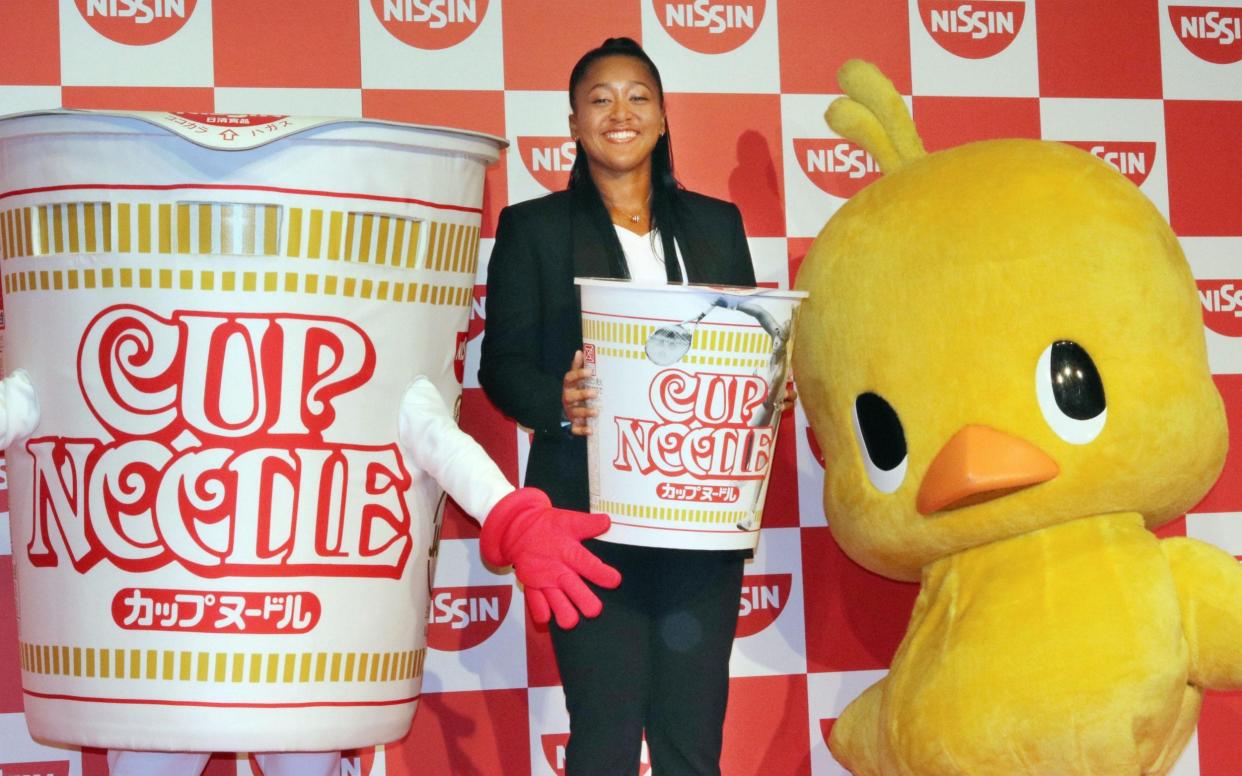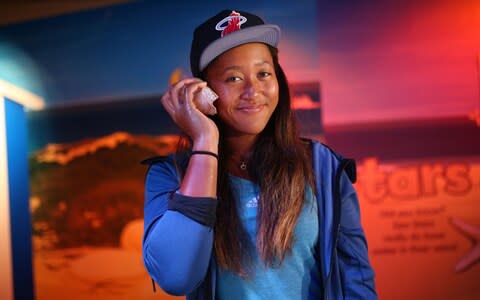Naomi Osaka: From multinational giants to noodle firms - why everyone wants a piece of world No 1

At the tender age of 21, Naomi Osaka’s multinational heritage and enigmatic appeal are already putting her on the road to becoming the most marketable female athlete in history.
The yardstick here – as in so many areas of the game – is supplied by Serena Williams, whose annual endorsements were reported last week to add up to £25m. Although Osaka’s agency IMG wouldn’t be drawn on any numbers, insiders and sports marketing experts suggest that Osaka has already tallied up that amount in the calendar year, and may well go on to eclipse it.
The Japanese market is a particularly lucrative one, with world No 7 Kei Nishikori already standing in third place on the Forbes list of best-paid tennis players – behind Roger Federer and Novak Djokovic but ahead of Rafael Nadal.
Celebrity endorsements are hugely valuable in this culture, and there are only perhaps two other Japanese athletes – Los Angeles Angels pitcher Shohei Ohtani and golfer Hideki Matsuyama – who can claim to have an international stature matching that of the two big tennis stars.
Osaka’s Nike deal – which switched her out of Adidas clothing in April – was a game-changer for her, but the real sign of her cachet is that she has retained the right to wear three individual patches on her kit, which now promote Mastercard, Nissin noodles and the Japanese airline ANA.

Normally, Nike forbid the use of any other brands on their athletes’ clothing, preferring a “cleanskin” approach. Even giants like Federer and Tiger Woods have abided by this principle (although Federer has since moved to Uniqlo). But there is a special appeal to an athlete who can open up a new market. Li Na, the two-time slam winner from China, had so much clout that she was allowed to wear two patches in the early part of this decade.
In Osaka’s case, she hits all the right notes for big businesses, especially in the lead up to next summer’s Tokyo Olympics, which she says “has been in my mind since 2016. I didn’t play Rio, and ever since then the Japanese reporters have been asking me about it so it’s kind of like a countdown.”
Brands are already looking for female athletes, and those who might be mixed race or multi-cultural offer an extra level of diversity. On top of that, you have Osaka’s self-effacing manner, which makes her feel relatable. After an era when Williams and Maria Sharapova brought territorial aggression to the court, she is a much more ambiguous presence.
With interests in fashion and E-sport, Osaka is already working on a line of Japanese streetwear – which she is designing herself with the help of sister Mari – while we can also expect her to be portrayed in a forthcoming line of Manga comics. The languid character you see on the court is backed by a formidable corporate machine.

